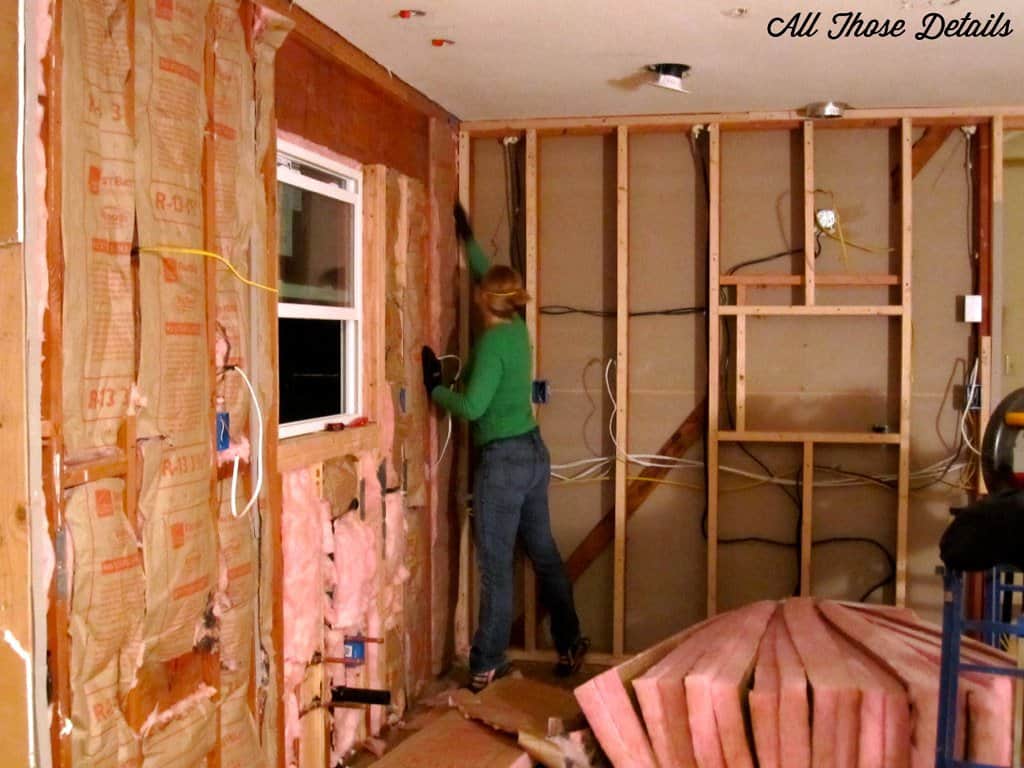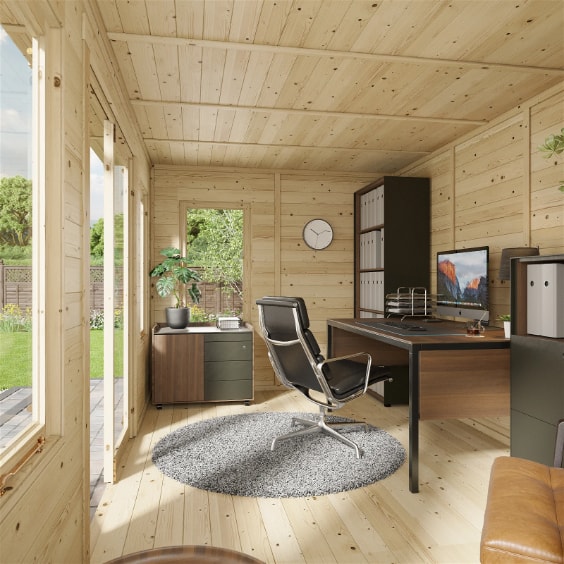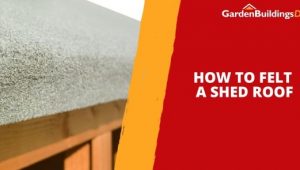Jump to:
If you’re looking for a warm garden room, a log cabin is a great choice thanks to its sturdy log walls offering a strong barrier against the cold. The thicker the logs, the better the insulation. But how well are log cabins insulated to ensure year-round comfort and energy efficiency?
There are a few crucial factors affecting how well insulated your log cabin is:
- Log cabins’ natural insulation
- Additional insulation options
- Maintenance
Keep reading for some answers! Or if you want to find a building immediately, check out our insulated cabins.
Are Log Cabins Insulated?
By default, garden log cabins offer partial insulation just from the wooden construction alone. Wood is a natural insulator that has thermal mass, meaning it can absorb, store and release heat.
The thicker the cladding, the better the insulation. For example, 44mm log cabins are often more effective at insulating, as the extra thickness retains more heat inside the cabin than their thinner counterparts. Discover more about this in our log cabin thickness guide.
However, timber alone won’t offer the same performance as modern insulated materials. Over time, gaps between the logs can also develop due to expansion and contraction, which compromises heat retention.
There are 2 ways a log cabin can be given additional insulation: double glazed windows and doors, and added insulation padding on the walls, roof and floor.
Without added insulation applied to the structure, garden log cabins are not as insulated as garden rooms made from structural insulated panels (SIP).

How are log cabins insulated?

One of the simplest ways log cabins are given extra insulation is by installing double-glazed doors and windows. These provide a thermal barrier, reducing heat loss and preventing draughts — especially important during colder months.
To insulate a log cabin for all seasons, insulation material can be added under the floor, against the walls, and under the roof. Common materials include:
- Foam insulation boards
- EcoFoil
- Fibreglass
- Expanded polystyrene (EPS)
On the walls and ceiling, these materials are usually kept in place by wooden framing and with a thin wooden panel or plasterboard as a new internal wall that you can decorate. Under the floors, the material would need to sit atop the floor bearers.
That added insulation helps improve the log cabin’s overall energy efficiency, measured in the U-value.
The U-value measures how effective a building material is at preventing heat from escaping. The lower the U-value, the better the insulation. It’s expressed in W/m²·K (watts per square metre per degree Kelvin), indicating how much heat passes through a material. (Source)
Thicker logs and insulation materials like foam boards or fibreglass reduce the U-value by slowing heat transfer. For example:
A 44mm log wall insulates better than a thinner 19mm wall because there’s more material to resist heat flow.
Adding insulation filler to walls, roofs, and floors (like EPS or EcoFoil) creates additional layers that trap heat, further lowering the U-value and improving energy efficiency.
Note that modifying your log cabin with insulation is undertaken at your own risk.
Retain Log Cabin Heat with Maintenance

There are also ways to increase insulation by filling in gaps.
Chinking is the process of filling the gaps between logs using a mortar or a special chinking compound. It basically seals out drafts and stops moisture from getting in. Caulking, in contrast, is used for smaller gaps and cracks. It uses a sealant to create a tighter, more insulated seal.
Regular upkeep goes a long way in avoiding damage or issues from creeping in over time. It’s especially worth checking things over after heavy rain, snow, or high winds. Look for any gaps, cracks, or worn sealant around windows or doors, as they can let in drafts. If your cabin has floor insulation, make sure it’s still in place and hasn’t shifted or worn down. Any spots you find that need attention can be resealed or replaced to keep the warmth inside.
Apply wood treatments as recommended to keep the timber’s insulation properties in good shape. For more tips, have a look at this guide: Log Cabin Maintenance Checklist
Round-up
Keeping your log cabin warm is easier with good insulation, and regular maintenance helps prevent it from losing effectiveness. It’ll stay cosy, and you’ll save on heating too!
Skip the hassle and go for one of our insulated log cabins. For more tips, check out: Insulated Log Cabin Advantages: Why You Need One
For more help choosing a log cabin, check out our log cabin buying guide.





